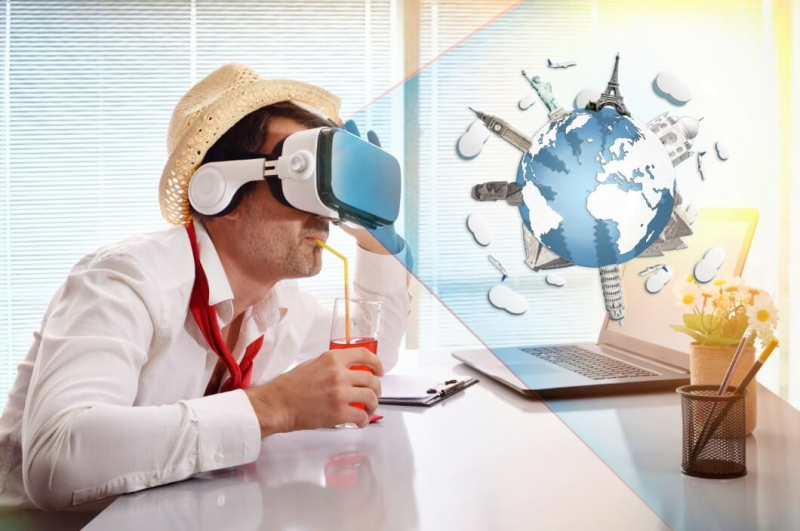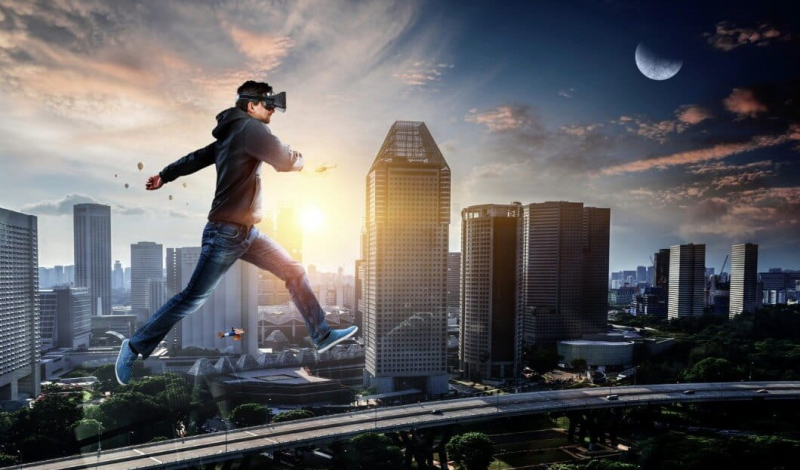Just picture breathing in the misty air, just like you would in the Amazon rainforest, or maybe the gentle rocking of a gondola in Venice – all while still in Manhattan. You know, with wanderlust and climate change both being major concerns, these virtual and augmented reality experiences are starting to become a popular staycation idea. In cities like New York, London, and Tokyo, these multi-sensory installations are blending tech and real sensations, offering a more sustainable kind of “travel.”
These things started as little experiments but have grown into a trend, changing how we see tourism. No need for passports, jet lag, or all those carbon emissions, which is nice – just pure discovery, one headset at a time.
Sensory Escapes in the Urban Jungle
VR tourism installations are really at the forefront, hijacking your senses to make you feel like you’re somewhere else. In New York, places like Arcadia Earth and Flight Adventures VR are some of the best. You put on a VR headset and stand on a platform that shakes like a train or plane. They pump in scents, like tropical flowers or the ocean, and the audio makes you feel like you’re surrounded by birds or in a busy market. Plus, the temperature changes to make you feel like you’re in Patagonia or Marrakech. Places like The Guardian and National Geographic have talked about how these setups use 360-degree projections to make these hyper-realistic worlds, from rainforests to city skylines.
Across the pond in London, the Otherworld VR centre really lets you customize things. They’ve got these comfy, soundproof booths where you can choose your experience: maybe a peaceful cruise through a Nordic fjord, or a hectic Tokyo market. Tokyo itself has The Infinite Journey and teamLab Planets, where digital art turns into these narrative portals. You can walk through a virtual cherry blossom storm or dive into an underwater world, while the sounds of the real city fade away. Paris, Madrid, and Barcelona are getting in on it too, with pop-up AR galleries that put phantom adventures over real streets.
But these aren’t just games; they’re kind of empathy machines, designed to make you really feel like you’re in these distant places.
Accessibility Meets Sustainability
Traditional travel just isn’t an option for some people, like those with mobility issues or who are scared of flying. That’s where VR tourism comes in, kind of leveling the playing field. As one expert put it, “It’s travel without the toll,” avoiding any physical or emotional stress. For example, an elderly couple in Barcelona can “walk” the Great Wall using augmented reality in a local park, or a wheelchair user in Madrid can enjoy a simulated safari.
Click here to preview your posts with PRO themes ››
Sustainability is another plus. Cutting down on flights and the huge crowds of tourists really cuts down on carbon emissions. Experts are saying these things can help with overtourism – keeping Venice’s canals nice and quiet, and Machu Picchu’s stones undisturbed. It’s kind of a greener way to explore the world.

Emotions, Art, and Insight
Beyond the logistics, these experiences tap into something really human: the excitement of escaping. People coming out of Arcadia Earth often talk about the “journey of light, sound, and pure emotion,” a release from the city. It’s not just a show; it’s like therapy, encouraging wonder and resilience.
Plus, there’s education and art involved, which makes it even better. As one person said, “An incredible combination of art and education… eliciting a truly human reaction to what our planet is facing.” Destinations aren’t just scenery; they’re interactive classrooms. Maybe you want to go to Antarctica.
No innovation is without its complications, though. Building and keeping these digital wonderlands running needs substantial resources for both hardware and maintenance. This potentially puts it out of reach for smaller groups and possibly creates a situation of exclusivity. Technical issues still exist, too. VR tourism can be incredibly immersive, but specialists point out that it’s “limited by our inability to fully replicate senses like taste or unfiltered touch.” A virtual espresso in Rome may look authentic, but that crucial flavor? Still missing.
The more profound issue is a philosophical one. Can digital images truly replace the surprising moments of actual travel – the unexpected conversation with a local, the feel of a rough, natural trail? Critics are concerned about a lack of depth, questioning whether a simulated temple in Kyoto really respects its cultural meaning or trivializes it. Supporters, however, argue that these are additions, not replacements – ways to stimulate real-world interest, not extinguish it.
As VR tourism improves and AI makes these experiences more believable, multisensory travel could become common, maybe through in-home setups or connected public spaces. This change isn’t just about having fun; it’s a change in how we think, as the boundaries between what’s real and what’s digital become less clear. In this digital era, “travel” is less about physical distance and more about limitless possibilities. The world is ready and waiting, one amazing experience at a time. Whether it replaces our suitcases or just makes traveling even better, one thing is certain – our internal journey might reshape our external ones.


